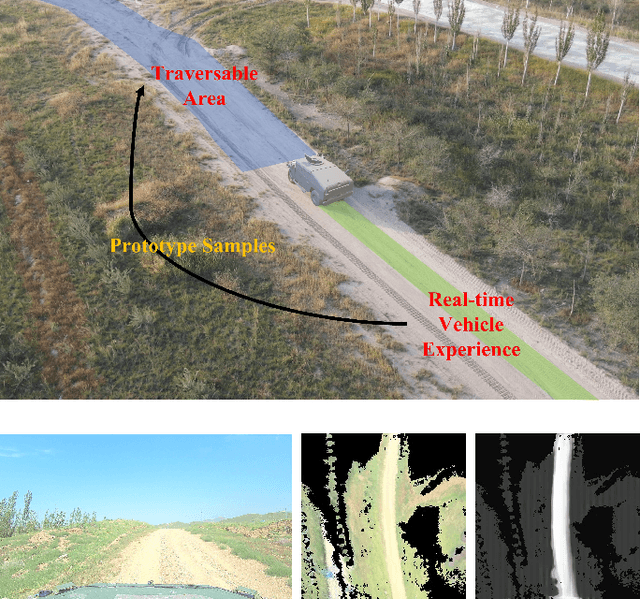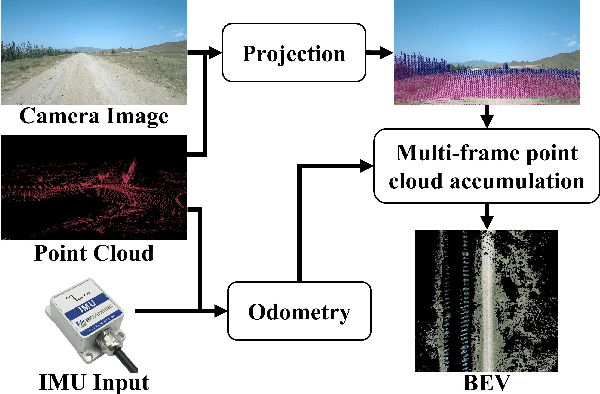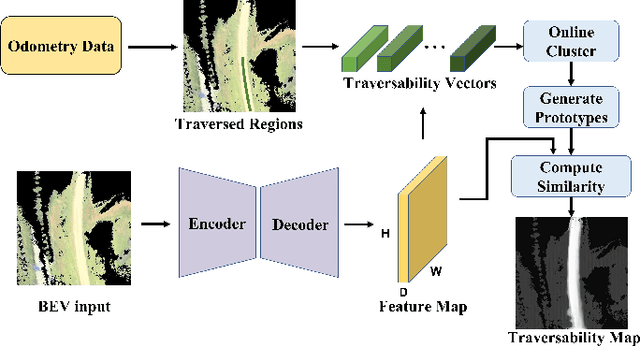Xiaohui Li
FlashVSR: Towards Real-Time Diffusion-Based Streaming Video Super-Resolution
Oct 14, 2025Abstract:Diffusion models have recently advanced video restoration, but applying them to real-world video super-resolution (VSR) remains challenging due to high latency, prohibitive computation, and poor generalization to ultra-high resolutions. Our goal in this work is to make diffusion-based VSR practical by achieving efficiency, scalability, and real-time performance. To this end, we propose FlashVSR, the first diffusion-based one-step streaming framework towards real-time VSR. FlashVSR runs at approximately 17 FPS for 768x1408 videos on a single A100 GPU by combining three complementary innovations: (i) a train-friendly three-stage distillation pipeline that enables streaming super-resolution, (ii) locality-constrained sparse attention that cuts redundant computation while bridging the train-test resolution gap, and (iii) a tiny conditional decoder that accelerates reconstruction without sacrificing quality. To support large-scale training, we also construct VSR-120K, a new dataset with 120k videos and 180k images. Extensive experiments show that FlashVSR scales reliably to ultra-high resolutions and achieves state-of-the-art performance with up to 12x speedup over prior one-step diffusion VSR models. We will release the code, pretrained models, and dataset to foster future research in efficient diffusion-based VSR.
Think Before You Talk: Enhancing Meaningful Dialogue Generation in Full-Duplex Speech Language Models with Planning-Inspired Text Guidance
Aug 10, 2025Abstract:Full-Duplex Speech Language Models (FD-SLMs) are specialized foundation models designed to enable natural, real-time spoken interactions by modeling complex conversational dynamics such as interruptions, backchannels, and overlapping speech, and End-to-end (e2e) FD-SLMs leverage real-world double-channel conversational data to capture nuanced two-speaker dialogue patterns for human-like interactions. However, they face a critical challenge -- their conversational abilities often degrade compared to pure-text conversation due to prolonged speech sequences and limited high-quality spoken dialogue data. While text-guided speech generation could mitigate these issues, it suffers from timing and length issues when integrating textual guidance into double-channel audio streams, disrupting the precise time alignment essential for natural interactions. To address these challenges, we propose TurnGuide, a novel planning-inspired approach that mimics human conversational planning by dynamically segmenting assistant speech into dialogue turns and generating turn-level text guidance before speech output, which effectively resolves both insertion timing and length challenges. Extensive experiments demonstrate our approach significantly improves e2e FD-SLMs' conversational abilities, enabling them to generate semantically meaningful and coherent speech while maintaining natural conversational flow. Demos are available at https://dreamtheater123.github.io/TurnGuide-Demo/. Code will be available at https://github.com/dreamtheater123/TurnGuide.
The Synergy Dilemma of Long-CoT SFT and RL: Investigating Post-Training Techniques for Reasoning VLMs
Jul 10, 2025Abstract:Large vision-language models (VLMs) increasingly adopt post-training techniques such as long chain-of-thought (CoT) supervised fine-tuning (SFT) and reinforcement learning (RL) to elicit sophisticated reasoning. While these methods exhibit synergy in language-only models, their joint effectiveness in VLMs remains uncertain. We present a systematic investigation into the distinct roles and interplay of long-CoT SFT and RL across multiple multimodal reasoning benchmarks. We find that SFT improves performance on difficult questions by in-depth, structured reasoning, but introduces verbosity and degrades performance on simpler ones. In contrast, RL promotes generalization and brevity, yielding consistent improvements across all difficulty levels, though the improvements on the hardest questions are less prominent compared to SFT. Surprisingly, combining them through two-staged, interleaved, or progressive training strategies, as well as data mixing and model merging, all fails to produce additive benefits, instead leading to trade-offs in accuracy, reasoning style, and response length. This ``synergy dilemma'' highlights the need for more seamless and adaptive approaches to unlock the full potential of combined post-training techniques for reasoning VLMs.
APTOS-2024 challenge report: Generation of synthetic 3D OCT images from fundus photographs
Jun 09, 2025Abstract:Optical Coherence Tomography (OCT) provides high-resolution, 3D, and non-invasive visualization of retinal layers in vivo, serving as a critical tool for lesion localization and disease diagnosis. However, its widespread adoption is limited by equipment costs and the need for specialized operators. In comparison, 2D color fundus photography offers faster acquisition and greater accessibility with less dependence on expensive devices. Although generative artificial intelligence has demonstrated promising results in medical image synthesis, translating 2D fundus images into 3D OCT images presents unique challenges due to inherent differences in data dimensionality and biological information between modalities. To advance generative models in the fundus-to-3D-OCT setting, the Asia Pacific Tele-Ophthalmology Society (APTOS-2024) organized a challenge titled Artificial Intelligence-based OCT Generation from Fundus Images. This paper details the challenge framework (referred to as APTOS-2024 Challenge), including: the benchmark dataset, evaluation methodology featuring two fidelity metrics-image-based distance (pixel-level OCT B-scan similarity) and video-based distance (semantic-level volumetric consistency), and analysis of top-performing solutions. The challenge attracted 342 participating teams, with 42 preliminary submissions and 9 finalists. Leading methodologies incorporated innovations in hybrid data preprocessing or augmentation (cross-modality collaborative paradigms), pre-training on external ophthalmic imaging datasets, integration of vision foundation models, and model architecture improvement. The APTOS-2024 Challenge is the first benchmark demonstrating the feasibility of fundus-to-3D-OCT synthesis as a potential solution for improving ophthalmic care accessibility in under-resourced healthcare settings, while helping to expedite medical research and clinical applications.
Road Similarity-Based BEV-Satellite Image Matching for UGV Localization
Apr 23, 2025Abstract:To address the challenge of autonomous UGV localization in GNSS-denied off-road environments,this study proposes a matching-based localization method that leverages BEV perception image and satellite map within a road similarity space to achieve high-precision positioning.We first implement a robust LiDAR-inertial odometry system, followed by the fusion of LiDAR and image data to generate a local BEV perception image of the UGV. This approach mitigates the significant viewpoint discrepancy between ground-view images and satellite map. The BEV image and satellite map are then projected into the road similarity space, where normalized cross correlation (NCC) is computed to assess the matching score.Finally, a particle filter is employed to estimate the probability distribution of the vehicle's pose.By comparing with GNSS ground truth, our localization system demonstrated stability without divergence over a long-distance test of 10 km, achieving an average lateral error of only 0.89 meters and an average planar Euclidean error of 3.41 meters. Furthermore, it maintained accurate and stable global localization even under nighttime conditions, further validating its robustness and adaptability.
Self-Supervised Traversability Learning with Online Prototype Adaptation for Off-Road Autonomous Driving
Apr 16, 2025



Abstract:Achieving reliable and safe autonomous driving in off-road environments requires accurate and efficient terrain traversability analysis. However, this task faces several challenges, including the scarcity of large-scale datasets tailored for off-road scenarios, the high cost and potential errors of manual annotation, the stringent real-time requirements of motion planning, and the limited computational power of onboard units. To address these challenges, this paper proposes a novel traversability learning method that leverages self-supervised learning, eliminating the need for manual annotation. For the first time, a Birds-Eye View (BEV) representation is used as input, reducing computational burden and improving adaptability to downstream motion planning. During vehicle operation, the proposed method conducts online analysis of traversed regions and dynamically updates prototypes to adaptively assess the traversability of the current environment, effectively handling dynamic scene changes. We evaluate our approach against state-of-the-art benchmarks on both public datasets and our own dataset, covering diverse seasons and geographical locations. Experimental results demonstrate that our method significantly outperforms recent approaches. Additionally, real-world vehicle experiments show that our method operates at 10 Hz, meeting real-time requirements, while a 5.5 km autonomous driving experiment further validates the generated traversability cost maps compatibility with downstream motion planning.
EGVD: Event-Guided Video Diffusion Model for Physically Realistic Large-Motion Frame Interpolation
Mar 26, 2025Abstract:Video frame interpolation (VFI) in scenarios with large motion remains challenging due to motion ambiguity between frames. While event cameras can capture high temporal resolution motion information, existing event-based VFI methods struggle with limited training data and complex motion patterns. In this paper, we introduce Event-Guided Video Diffusion Model (EGVD), a novel framework that leverages the powerful priors of pre-trained stable video diffusion models alongside the precise temporal information from event cameras. Our approach features a Multi-modal Motion Condition Generator (MMCG) that effectively integrates RGB frames and event signals to guide the diffusion process, producing physically realistic intermediate frames. We employ a selective fine-tuning strategy that preserves spatial modeling capabilities while efficiently incorporating event-guided temporal information. We incorporate input-output normalization techniques inspired by recent advances in diffusion modeling to enhance training stability across varying noise levels. To improve generalization, we construct a comprehensive dataset combining both real and simulated event data across diverse scenarios. Extensive experiments on both real and simulated datasets demonstrate that EGVD significantly outperforms existing methods in handling large motion and challenging lighting conditions, achieving substantial improvements in perceptual quality metrics (27.4% better LPIPS on Prophesee and 24.1% on BSRGB) while maintaining competitive fidelity measures. Code and datasets available at: https://github.com/OpenImagingLab/EGVD.
Research on the Offshore Marine Communication Environment Based on Satellite Remote Sensing Data
Feb 19, 2025Abstract:Air-sea interface fluxes significantly impact the reliability and efficiency of maritime communication. Compared to sparse in-situ ocean observations, satellite remote sensing data offers broader coverage and extended temporal span. This study utilizes COARE V3.5 algorithm to calculate momentum flux, sensible heat flux, and latent heat flux at the air-sea interface, based on satellite synthetic aperture radar (SAR) wind speed data, reanalysis data, and buoy measurements, combined with neural network methods. Findings indicate that SAR wind speed data corrected via neural networks show improved consistency with buoy-measured wind speeds in flux calculations. Specifically, the bias in friction velocity decreased from -0.03 m/s to 0.01 m/s, wind stress bias from -0.03 N/m^2 to 0.00 N/m^2, drag coefficient bias from -0.29 to -0.21, latent heat flux bias from -8.32 W/m^2 to 5.41 W/m^2, and sensible heat flux bias from 0.67 W/m^2 to 0.06 W/m^2. Results suggest that the neural network-corrected SAR wind speed data can provide more reliable environmental data for maritime communication.
DiffVSR: Enhancing Real-World Video Super-Resolution with Diffusion Models for Advanced Visual Quality and Temporal Consistency
Jan 17, 2025Abstract:Diffusion models have demonstrated exceptional capabilities in image generation and restoration, yet their application to video super-resolution faces significant challenges in maintaining both high fidelity and temporal consistency. We present DiffVSR, a diffusion-based framework for real-world video super-resolution that effectively addresses these challenges through key innovations. For intra-sequence coherence, we develop a multi-scale temporal attention module and temporal-enhanced VAE decoder that capture fine-grained motion details. To ensure inter-sequence stability, we introduce a noise rescheduling mechanism with an interweaved latent transition approach, which enhances temporal consistency without additional training overhead. We propose a progressive learning strategy that transitions from simple to complex degradations, enabling robust optimization despite limited high-quality video data. Extensive experiments demonstrate that DiffVSR delivers superior results in both visual quality and temporal consistency, setting a new performance standard in real-world video super-resolution.
Subspace-Constrained Quadratic Matrix Factorization: Algorithm and Applications
Nov 07, 2024Abstract:Matrix Factorization has emerged as a widely adopted framework for modeling data exhibiting low-rank structures. To address challenges in manifold learning, this paper presents a subspace-constrained quadratic matrix factorization model. The model is designed to jointly learn key low-dimensional structures, including the tangent space, the normal subspace, and the quadratic form that links the tangent space to a low-dimensional representation. We solve the proposed factorization model using an alternating minimization method, involving an in-depth investigation of nonlinear regression and projection subproblems. Theoretical properties of the quadratic projection problem and convergence characteristics of the alternating strategy are also investigated. To validate our approach, we conduct numerical experiments on synthetic and real-world datasets. Results demonstrate that our model outperforms existing methods, highlighting its robustness and efficacy in capturing core low-dimensional structures.
 Add to Chrome
Add to Chrome Add to Firefox
Add to Firefox Add to Edge
Add to Edge